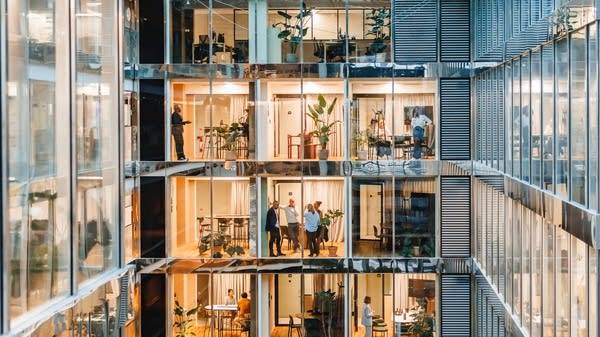New viral variants spur calls for better masks
Front-line workers are especially at risk indoors. Wearing a cloth and surgical mask together is an option to N95s, one doctor says.

As fears about more transmissible variants of COVID-19 heighten, a growing number of experts have urged the public to wear better masks, particularly front-line essential workers who face the highest risks and spend the most time indoors with others.
Mysheka Ronquillo works part time at a fast-food restaurant in Los Angeles, one of the worst hotspots for the virus in the country. Sometimes she gets disposable paper masks at work, but supplies often run low, so she wears her own cloth one. It’s a big difference from her other job as a home health care aid for two older patients.
“They have everything right at the front door,” she said. “As soon as I walk in, I change from my cloth masks. They have KN95 masks.”
Those filter at least 95% of small airborne particles, one of the primary drivers of COVID-19 transmission. Infectious aerosols build up in the air as people speak and breathe, putting workers at risk when they spend long periods of time indoors with others, as fast-food workers must do.
Ronquillo said several co-workers at the restaurant have gotten sick, and she worries about bringing the virus home, where she lives with five family members, including her mom.
“I’m very concerned, because there’s 10 to 15 people in the space at work, and you’re literally side by side,” she said.
As the virus has become more pervasive and potentially more transmissible, the risk has multiplied, said Monica Gandhi, an infectious disease doctor at University of California, San Francisco. That increased risk means workers need increased protection.
“It’s not that cloth masks don’t work,” she said. “They do block a lot of the virus, but they don’t block all of it. If you’re in these indoor spaces, I would wear a stronger mask.”
Disposable N95 respirators are still best reserved for health care workers she said, because supplies are limited and they must be specially fit and tested. But there are better alternatives than just cloth, and Gandhi worries that message has gotten lost.
“The tale of masks is a very woeful one in the United States,” she said.
In the earliest days of the pandemic, officials like former Surgeon General Jerome Adams said not to wear masks, tweeting in February “Seriously people- STOP BUYING MASKS! They are NOT effective in preventing general public from catching #Coronavirus, but if healthcare providers can’t get them to care for sick patients, it puts them and our communities at risk!”
Once asymptomatic spread was understood, prompting calls for widespread masking, supplies of standard medical masks were short — not just for disposable N95s, but the thinner paper surgical masks.
Americans were advised to make their own cloth masks out of household materials, and clothing companies began selling cloth masks of varying quality.
The message that N95’s are only for health care workers and everyone else can just use whatever they can find has kind of stuck, Gandhi said.
“It was a blunt way of thinking,” she said. “It wasn’t nuanced. And it wasn’t correct.”
Devabhaktuni Srikrishna, the founder of the patient education portal Patient Knowhow, has been calling for essential workers, especially, to wear higher-filtration masks for months.
“Any mask is better than no mask,” he said. “But there’s a hierarchy of different solutions.”
He and two Harvard Medical School partners analyzed all of the available consumer options. The best, they determined, is a reusable elastomeric N95, the kind made of a stretchy silicone or plastic material and often used for construction, though they do make the wearer appear somewhat like Darth Vader.
“They’re not exactly the most stylish things,” Srikrishna said, but they’re widely available, unlike disposable N95s. They fit better, are more comfortable and provide the same level of protection.
In November, the New York City Fire Department began using elastomeric N95s in the field.
As virus cases have mounted in Los Angeles, fast-food worker Ronquillo has improvised her own solution: doubling up.
“Most of the time, I have on a cloth mask that comes down my neck, and then I’ll put another mask over that,” she said.
Gandhi at UC San Francisco said the best combination is a standard surgical mask, which uses materials that help trap viral particles with static electricity, layered with a washable cloth mask. It doesn’t matter which mask goes on first, but Gandhi said she likes to put the washable cloth next to the face so the paper mask lasts longer.
“It really isn’t about thickness, it’s about the physical properties of those two masks being layered on top of each other,” Gandhi said. “That blocks the virus almost as effectively as an N95.”













